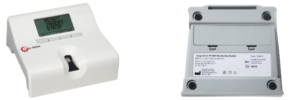Anticoagulation medicines slow or reduce the incidence of harmful blood clots that may cause life-threatening issues like Deep Vein Thrombosis (DVT) or Pulmonary Embolism (PE). A prescription of warfarin is accompanied by the need for routine blood tests to ensure correct dosing. PT/INR Patient Self-Testing (PST) may be the best option.
Some patients may prefer the option of at-home or patient self-testing. Your physician or provider can discuss your anticoagulation management needs and the pros and cons of pursuing this option. This tutorial will not replace a conversation with your provider.
If you are a good candidate for PST, you can benefit from the following:
- Upgrade your medication management through increased testing frequency
- Experience convenient scheduling saving time and money
- Improve data and achieve faster dosing adjustments
For patients on warfarin, not all respond to its effects in the same way. Factors such as genetics, diet, other illnesses, and medications cause people to respond differently. Patient specific dosing and monitoring is necessary.
The blood test used to monitor coagulation is called Prothrombin Time, reported as International Normalized Ratio units (PT/INR). Patients prescribed warfarin should monitor their blood frequently from 1 to 8 times per month to confirm that they are within a normal range to prevent blood clots or excessive bleeding.
At home INR testing meters such as the Coag-Sense® PT2 System require only a small amount of blood. Results are available in less than one minute and report actual clotting time. The meter features wired or wireless connection options allowing easy communication with providers without the need to travel to a doctor’s office or lab.
Patients who monitor their PT/INR levels often have better therapeutic outcomes without harmful side effects. In other words, they experience fewer bleeding or clotting complications and are more often within the targeted INR range.



